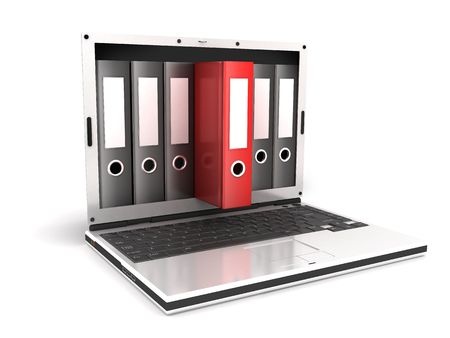Aerospace
It is apparent, that a sloppy workstyle poses mortal risks on passengers, crews, airlines and other related persons. Hence, quality and security standards of work, services, material and products are more strict as in hardly any other industry. Legal requirements (e.g. FAA) or quality standards (such as AS 9100, CEN/TC274, ISO/TC 20) can therefore only be the first formal step to embed and document quality and security throughout the product lifecycle. . Materials, mechanics, drives, wiring system and electronics, avionic, cargo and ground support require an integrated quality management approach.
Product life cycles cover a couple of decades. Hence, related information must be stored for these lifetimes auditable, safely and accessible.

Cost pressure, globalised supply chains and increasing environmental standards require an efficient knowledge management process X-border into various language and cultural settings. Efficient knowledge management is at the core of any successful business strategy
The C.O.S Collaboration Online Suite is an integrated platform that supports you in a wide spectrum of quality management tasks covering construction, production, purchase, sales down to after sales service, compliance documentation and market observation.
Do not bind your resources in redundant communication and administration, allocate them where they contribute to innovation, quality and security adding more value to the business. Let information technology work for you.
Establishing standards
Monitoring quality throughout the entire supply chain.induces a clear always current and auditable communication on quality and security standards. The only way to achieve this is maintaining steering an authorised and controlled documentation as most of the standards require in the first place. Furthermore, the organisation has the obligation to inform the staff and keep an audit trail of these notifications. A pre-requisite is a digital signing and authentication procedure that works internally and externally for those decades of the product life cycle or is updated vitally to overcome new arising threats in the field of information technology. Internal and external standards, instructions and regulations must be adapted to every employee’s context, workplace and environment without spamming them. The flood of information can only be managed efficiently, if the system can support a controlled and individual communication stream to each person involved in quality and security relevant areas. To make the quality management system work, a couple of principles must be repected:
Relations like conflicts, redundancies or synergies can arise from external regulation, technical restrictions and customer specifications. The internal documentation must therefore analyse, harmonise and resolve these interdependencies.
The capacity limits of the organisation as a whole and of each individual must not be exceeded,
All changes must be processed within the given capacity and time limits.
Develop the appropriate approach to efficiently communicate regulatory requirements of your market and business environment among your organisation.
Monitoring standards

The risk management function is embedded and supported by a central database including complaint management, audits, improvement ideas, goods entry inspections, contracts , laboratory analysis and test reports. Therefore, aggregated quality information detecting patterns in all the areas and modules supports an early risk detection. This way you can outmanoeuvre the competition and protect the organisation from sudden crisis.
The market is not tolerant on quality or safety and does not forget easily.
Erasing “standard deviations”
Detected risks must be evaluated and prioritised to find the approriate solution or strategy efficiently. Counter measures must be defined concisely and tracked continuously until implemented. Surely an audit trail is necessary to demonstrate external stakeholders such as governmental authorities the risk awareness and devotion of the OEM or 2nd, 3rd tier supplier.
Practical compliance in your everyday business
Management system
co_documents for the systematic capture of knowledge, norms and processes allows various navigation methods for your documentation to support the individual work style of users:
- Full text search (lile search engines on the web)
- Graphical by process visualisation
- Treeview following the logical documentation structure
- Keywords in alphabetical order
- Importance fort he roles the user covers
The documentation can contain references to the risk associated. Process owners and leaders can steer their processes and teams with the embedded instruments.

Ad Hoc project management- and issue tracking
An organisation or company is like a living body with the need to react on environmental influences. Especially consumer/customer behaviour and regulatory framework have a large impact on the business performance. The module co_issues is a central common platform to run such projects and follow up the tasks related to necessary internal re-organisations as a response to external factors.
Relevant knowledge
The notification engine must not only run the internal communication efficient, tracable and reliable. The messages sent need to conquer the threshold of the receivers perception. Our engine supports this with a very targeted sending function.
Modern information basis
In the digital 21st century it has become illusionary to run a business without providing each position in the organisation the relevant knowledge and information basis to be efficient.
The co_suite as integrated system therefore provides:
- Multiple external and internal norms,
- Risk oriented implementation of regulatory requirements with an individual approach for each user, position, department or location,
- Audit trail tracking communication, authoristations and changes reliably,
- Product related reporting,
- Gradient integration of external employees, suppliers,
- Encryption to treat and protect confidential information adequately.
The co_suite
- Documents combines external regulatory framework and norms and internal control system implementing the overall business strategy in the organisation risk- and process oriented.
- Complaints collects criticism, gossip, shortcomings or deviations from quality standards from various audiences (employees, other external stakeholders, like business, partners, suppliers and customers and redirects them to appropriate solutions,
- Ideas is a platform to stimulate and transform the creative potential of your organisation into change and therefore value,
- Training supports the transfer of knowledge among staff,
- Contracts monitors the lifecycle and compliance of agreements.
- Audits allows to manage a systematic process to detect and erase deficiencies in the organization.
- Projects steers the organistion through long complex ventures. Especially the lifecycle of product from acquisition over construction, engineering, launch until production phase till after production and recycling. The multi-project management tool monitors the KPIs based on quality, cost and time plant by plant, department by department.
- Issues tracks all tasks within the organisation requiring a common, central and traceable implementation.
Modular integration
Monitoring the quality risk requires a tool to detect patterns and interdependencies among data of heterogeneous sources, such as audits, complaints, laboratory reports, goods entry inspection or work instructions. C.O.S’s co_suite develops these instruments based on computer lingusitics (AI) to discover hidden connections and messages across all data (Auto-Tagging).
You can find the same item number, keyword or search string in documents of various origin, purpose and character. However, the appearance in multiple of them can be a risk indicator.
Cooperation
Quality cannot be delegated to a single person (quality manager) or a group (quality department). It is the challenge for the entire organisation: The effective collaboration for the common target requires:
- Avoiding redundant information and communication,
- Concentration on relevant data,
- Clear responsibilities,
- Transparent reporting lines
- A controlled schedule.
Managing information streams and knowledge transfer among the organisation to update the team timely, accurately and completely requires mechanism to tailor the packages to “digestible” doses for the individual’s role and needs. This is the only way the individual can perform efficient and stay compliant.

Logs and audit trails guarantee a sustainable proof for the information transfer from organisation to employee wherever legally required. A roles based concept with strict logical access controls enforces the internal controls. This way, responsibilities do not diffuse.
A common database and a browser based front end make the co_suite the rosetta stone for each risk-, quality and compliance officer to establish his policies and standards. Logical access controls, n-factor authentication, encryption, certified software components and digital signatures provide a secure application infrastructure.
Tablet, Smart- or I-Phone: Information is sent to, wherever needed in the (daily) operations – even to traveling staff.
Search and navigation ease the fast satisfaction of urgent information needs under pressure. Superfluous complexity is filtered. This accelerates the introduction of the applications and grow the acceptance.
Interdependencies among data and information can be analysed X-module. The quality risk is therefore controlled throughout the entire supply chain.
